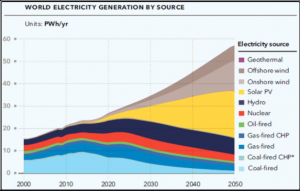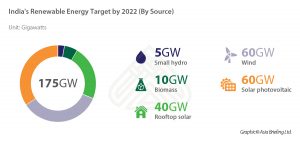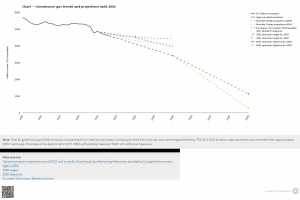Post Date: Oct 30, 2021
The International Energy Agency (IEA)‘s Renewable 2020 Report projects the growth of renewable energy at 50% for the period 2019-2024. This has a significant impact on the future of renewable energy. It also attracts considerable investment in renewable energy projects.
World governments are realizing the need to propagate alternate energy sources. It is no wonder that renewable resources like solar, wind, hydropower, etc., are gaining traction. Today, renewable power meets up to 28% of the world’s energy needs. In fact, scientists agree that it is possible to completely phase out the current dependency on coal within the next 30 years.

The Stanford Study
Stanford University conducted a study with 47 peer-reviewed papers on the energy crisis. It examined the possibility of countries adapting renewables as their sole energy source. The study factored in 24 different geographical regions with varying energy needs. The conclusion? It is possible to completely replace polluting and non-sustainable energy sources with renewables. It included plans for grid stability and energy storage solutions. One of the papers had detailed green new deal roadmaps. These roadmaps were for 143 countries that are responsible for 99.7% of the world’s carbon emissions. The theoretical projections from the study estimate that the switch to wind, water, and solar energy could help avoid the 7 million annual deaths caused by air pollution. It also showed promise in slowing down and reversing the effects of global warming.
Impact on Developing Nations
The targets might seem ambitious, even far-fetched. But planned execution could mean mitigating the impact of global climate change. We can reverse chaotic weather patterns, devastating floods, storms, famine, etc.
Most importantly, it could also mean the end of air pollution and, to a certain extent, water and soil pollution. Thus, clean energy sources and energy investing could be a boon for developing and low-income nations that bear the brunt of the crisis.
Despite being the worst affected, developing nations attract a lot of renewable energy investors. Solar, wind, geothermal, and even the lesser-explored bio-mass energy are available in abundance. The labor-intensive production systems are also available at cheaper rates than developed nations. Thus they show promise in leading the clean energy transition drive.

Taking India as an example, the country aims to reach 100 GW of solar energy and 75 GW of other renewable energy by 2022. The NRD Council states that it will have an impact on the economy by generating 3,30,000 jobs. In Bangladesh, small-scale solar power plants are catching on as a viable solution to boosting energy resiliency. Solar energy powers roughly 5.2 million Bangladeshi households. This is nearly 12% of the nation’s total population.
Rwanda has been struggling with energy imports for the longest time. But it received the Strategic Climate Fund Scaling up Renewable Energy Program Grant. Their villages now get off-grid electricity set up by the 21.4 million grant since 2017. Brazil runs an energy auction system to encourage conversion to renewables. This kind of active energy investing helps combat the energy crisis on a global scale.
Reliable Renewable Energy Sources
Solar and wind came up as the most viable solutions in the clean energy search. They are zero-emission resources and are readily available. The electricity production costs are also low in comparison to thermal power production. Another evolving area of interest is electrification, especially in the automotive sector. Europe is rallying for renewables-based electrification of its industries, buildings, and transport. The projection states that its overall carbon emission will reduce by almost 90%.

Scientists across the world are also exploring Power-to-X. It is an umbrella term for the conversion of electricity into other elements. We can create heat, hydrogen, and even synthetic fuels from electricity. Using Power-to-X, we can transition to clean energy with minimal technological and infrastructure changes. This also opens up a lot of whitespace opportunities in clean energy investment.
But the renewable energy must be truly sustainable and run fewer production costs. For that, the focus should be on distributed generation and energy storage. Instead of centralized power production, DE systems rely on smaller sources. A smart grid connects each source with regulated transmission and widespread distribution. We also need to factor in the variable nature of wind and solar energy. Robust energy storage systems are in the works to ensure uninterrupted power supply. This creates a reliable power grid that caters to a faster pace of growth.
Investment in Solar Energy
Solar investment has been around for quite some years now. Both individuals and industries are exploring its feasibility. To catalyze this growth, it would need an energy investment to the tune of 18 Billion USD in India alone. This calls for significant changes in India’s Distributed Renewable Energy (DRE) policy. A fresh policy would allow the growth of the private renewable energy market. This opens up multiple applications while keeping the state-run distribution companies relevant.
The renewable energy projects would primarily focus on rooftop Solar systems. Solar-powered agricultural pumps, cold storage, EV charging stations, distributed storage, and smart energy management are additional opportunities. This solar investment would accelerate economic growth in the automotive and agricultural front.
The Roof top Solar (RTS) and Off-Grid Solar (OGS) markets are mostly run by small-scale businesses now. They are in need of growth-stage funding to scale up. This would increase the affordability and accessibility to the technology. The World Economic Forum came up with the Energy Transition Index (ETI) in 2019. It will help policymakers foster this very change. It provided a framework for the three pillars of energy transition:
- Security and access
- Environmental sustainability, and
- Economic development and growth.
This would be of immense help to developing nations like India to go clean in the coming years. It is definitely attainable. The government, investors, and other stakeholders should take the necessary measures. The need of the hour is to address the financial and research-related gaps and take this tech to the streets.
renewables.org is an experienced platform aggregator for enabling renewable energy projects. We leverage our technical expertise in optimizing clean energy production. With projects spread across Asia and Africa, investors can choose to invest as low as $100. We guarantee a 6% APY on all green investments across diverse portfolios.
